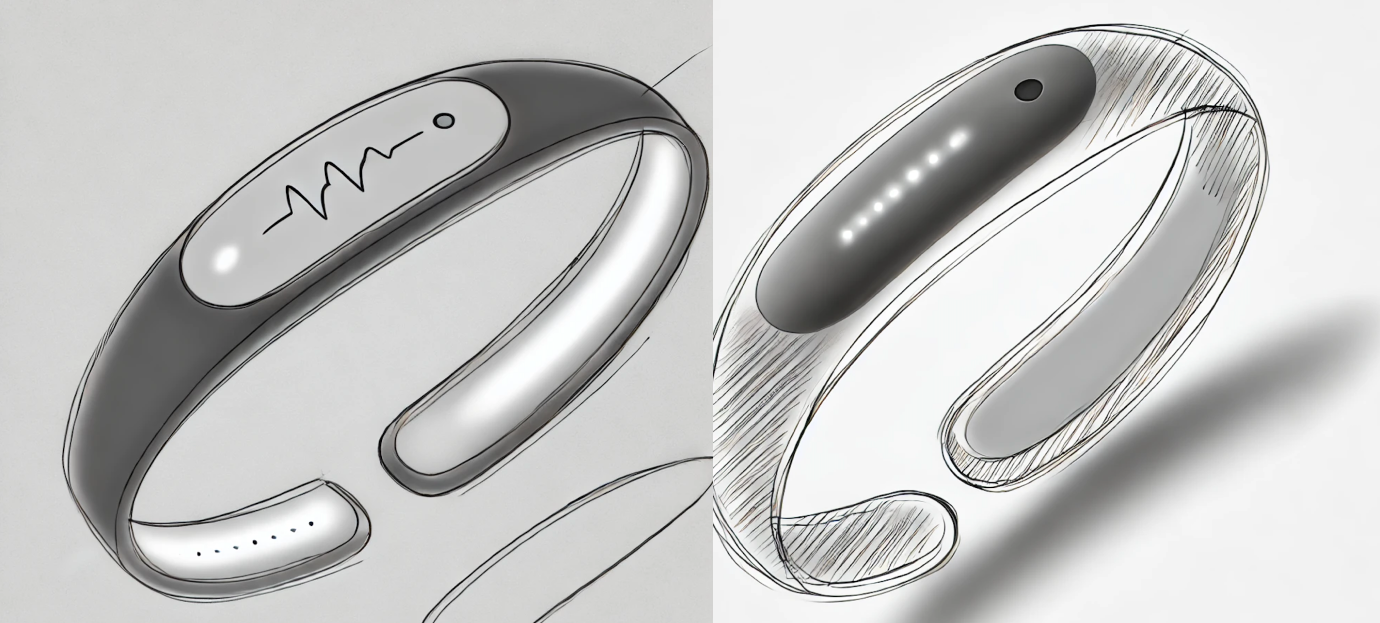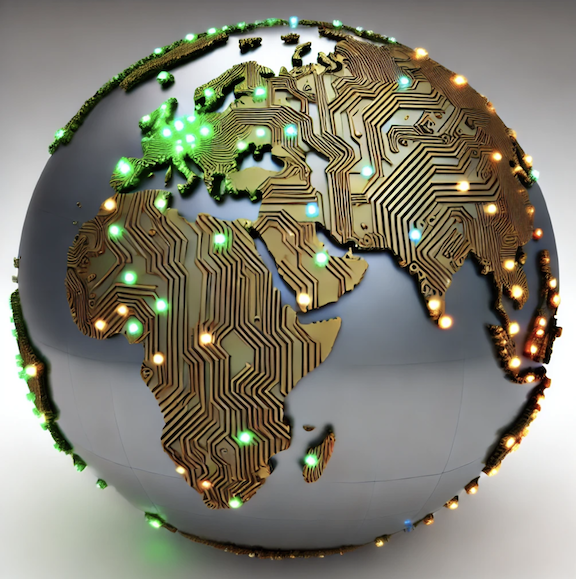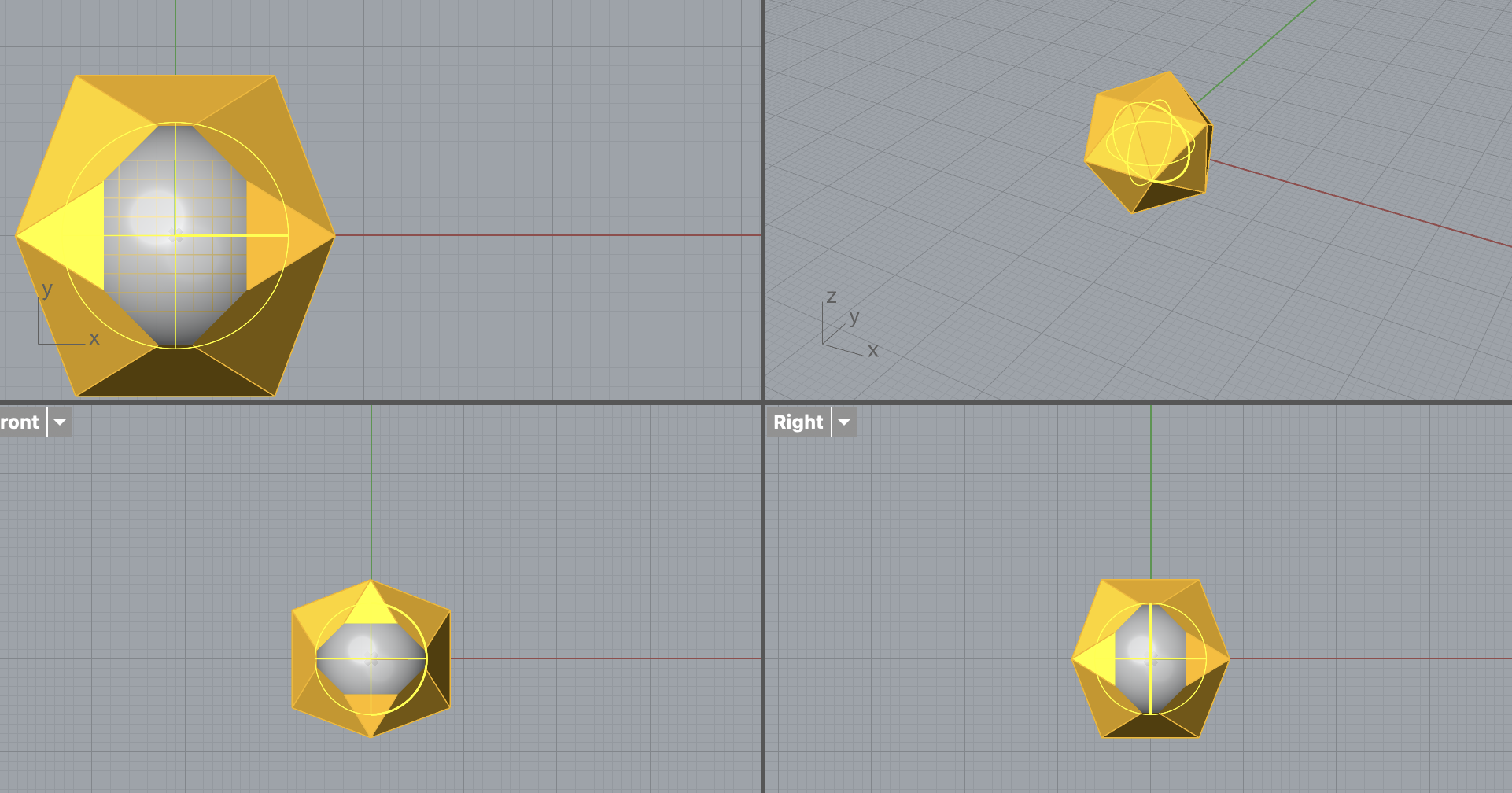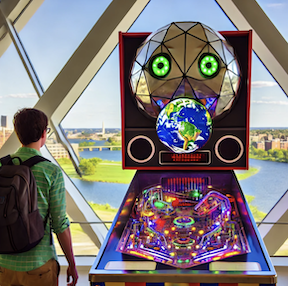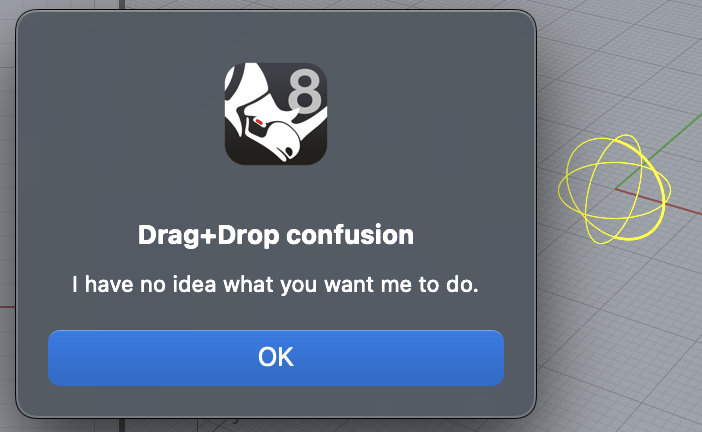The final product, to my eyes, contained more failures than successes. It was gratifying, and a relief, when friends and other attendees found the project interesting. I am grateful that I have a foundation to build on, and especially grateful that the act of making this gave me a chance to solidify skills that I was otherwise uncertain about at best. Perhaps the most important approval was from my fiancée, who has deemed it worthy of a permanent spot in our apartment.

When I settled on map instead of a globe, I wanted to make an excellent map. In wake of my love for embroidering, I tried making an .svg in Inkscape. After struggling there, I tried in Adobe. In both cases, the design files looks too complex to work safely on a laser cutter.
I then compared Mercator, Robinson and Equal Earth map projections and settled on the Robinson projection. I was able to find a free to download Robinson .svg here.
I was able to manipulate the file in Rhino, and set the 60W laser cutter in the Arch shop to etch settings for 1/8" acrylic (power/speed 20/20, frequency 5000). Thankfully, my test cut came out clear enough to use in my presentation (more details later in the bugs section).
Design file for the for print is here.

An interactive riddle pitting human vs. LLM, "...the extent of my world" is a challenge to confront our boundaries. Players begin the game by pressing a button, which prompts the display of an invitation: "tell me about your world." Players then have one minute to describe their world, and receive a score for how "extensive" their world is. The twist: an LLM is playing alongside them.
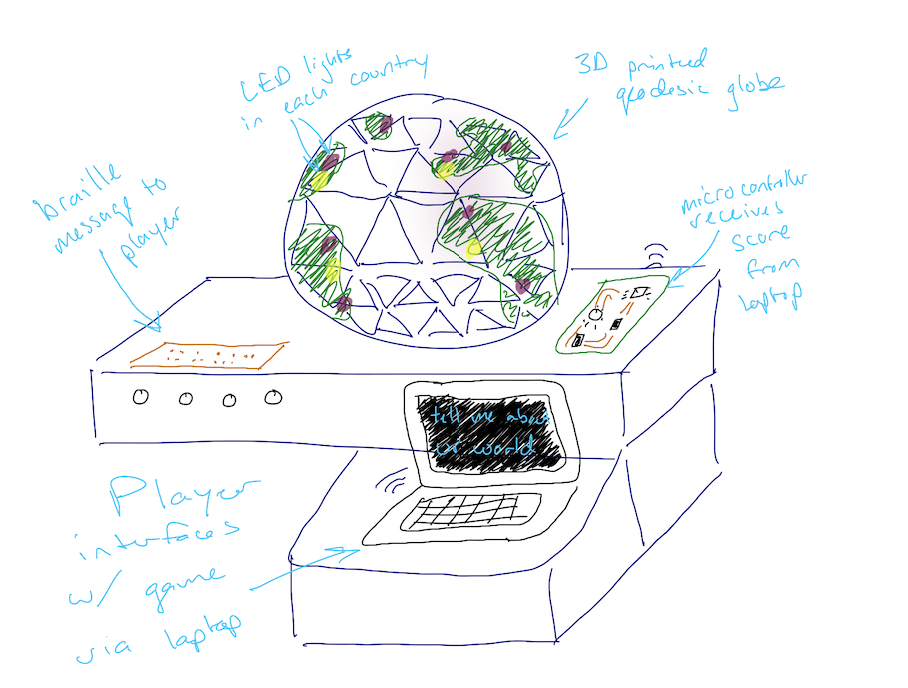
My final project tracker is here. The project will be a geodesic sphere, approximately one foot in diameter, made out of a 3D printed frame and acrylic facets. The facets of the sphere will have a map of the Earth laser-etched into them. The globe will be inlaid with neopixels that light up based on input from a basic software program on my computer. The project is composed of the following systems:
